In the process of developing and creating a new smartphone model, most manufacturers check and recheck the entire chain of device creation, from the design documentation to the final production line. However, despite all the measures taken, devices entering the market may have childhood sores, in some cases of a software nature, and sometimes of a hardware nature. And if everything is clear with software problems, then it is not always possible to solve a hardware problem not only at home, but also in a professional service center.
One such problem is the pink stripe on the seventh generation of Samsung's Galaxy smartphones. On the net you can find a huge number of advertisements for the sale of these phone models with a pink stripe on the screen. Apparently, the problem was massive.
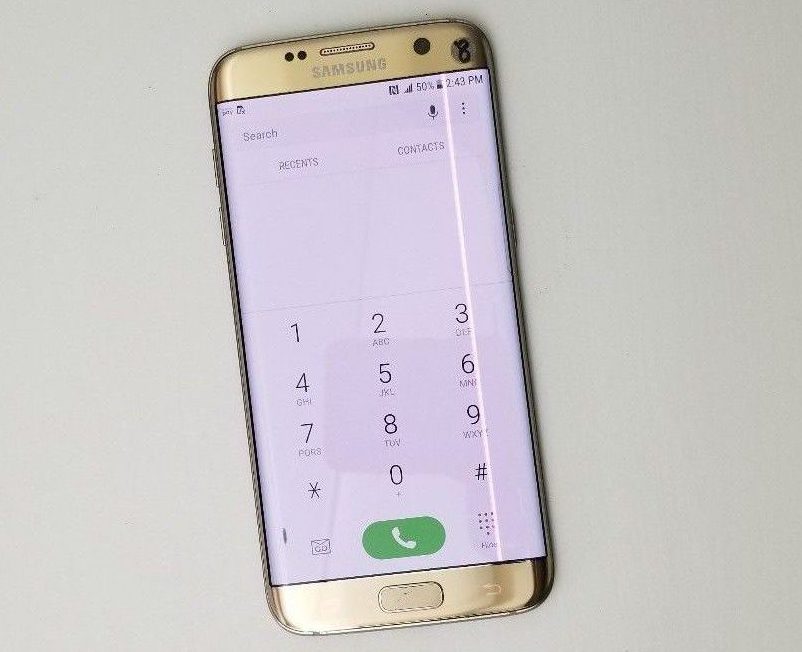
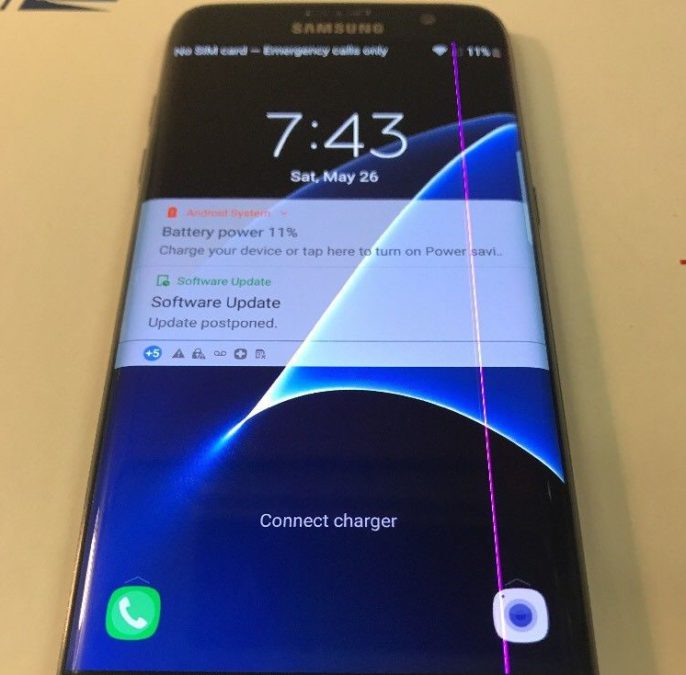
Moreover, according to the owners of such “striped” phones, the defect appeared suddenly, without any apparent reason. Unfortunately, we have no opportunity to verify the veracity of such statements. But we have the opportunity to analyze the nature of the problem and, on the basis of this, try to understand the causes of its occurrence.
It should be noted that the overwhelming majority of the stripe appeared on the right side of the screen, in the area of the front camera.
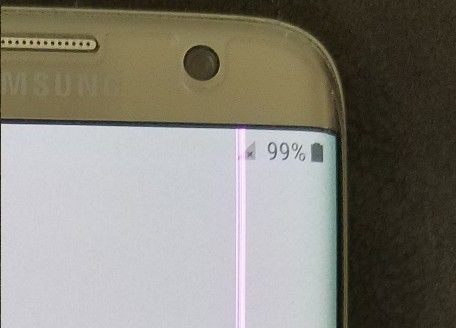
In addition to the very fact that there was a problem, many who encountered it noted one curious feature: if you click on the display in the area of this very front camera, the strip disappeared either completely or partially. After the pressure was removed, the band reappeared.
All this suggests that the problem is hardware and cannot be solved using software methods.
Let's try to look inside and see the reason closer. To do this, let's analyze the module.
Unfortunately, the display module from S / S7 Edge was not at hand, but there is a faulty module from the Galaxy A3 2016 of a very similar design, which we will scoff at.

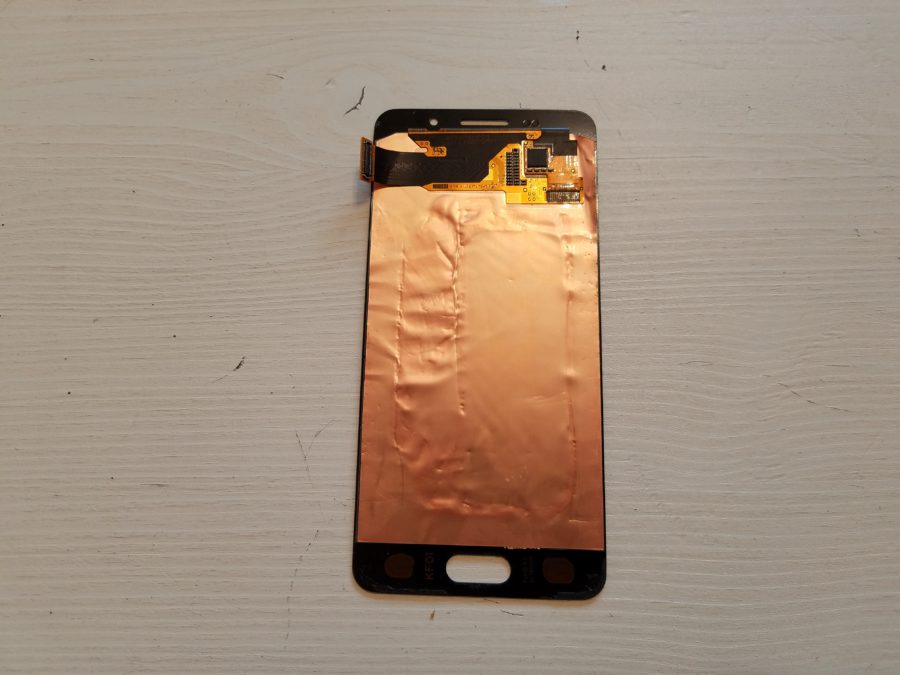
First, let's look at the design of the module itself. On the reverse side, we see a wide train coming out of the upper end of the matrix. Moreover, this loop is double and contains one more touchscreen loop. The touchscreen cable is on the right side (when viewed from the back), and most likely it has nothing to do with it.

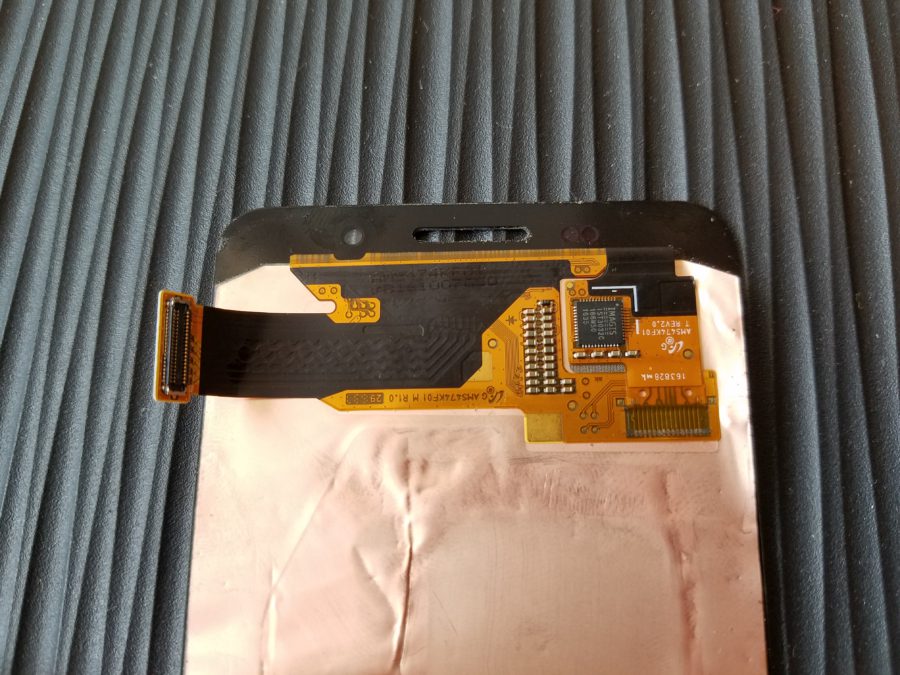
Now we look at the opposite side. And there we see an interesting picture – in order to keep the frame small and fit the front camera there, the manufacturer made the display cable in this place curly, with a cutout for this very camera. If we look at the module from the S7 Edge, we will find that this cutout is even larger there, there is less space for contacts, and, as you know, where it is thin, it breaks there. Moreover, the touchscreen loop goes over the display loop, complicating the design.

In order to look inside and understand what may be happening there, we will have to divide the module into a matrix and glass. We cut.

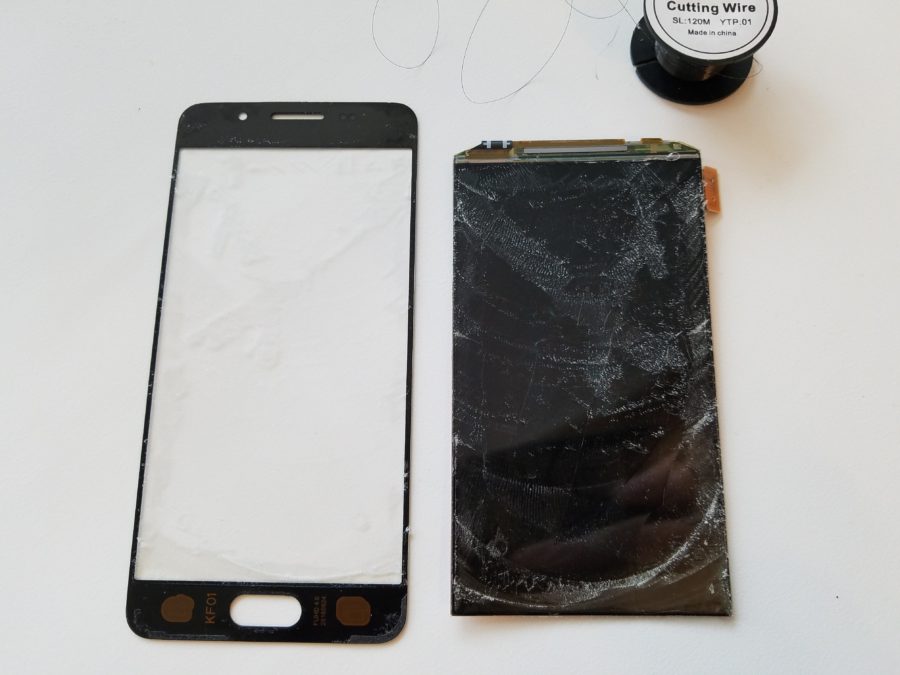
Let's take a closer look at our handiwork.
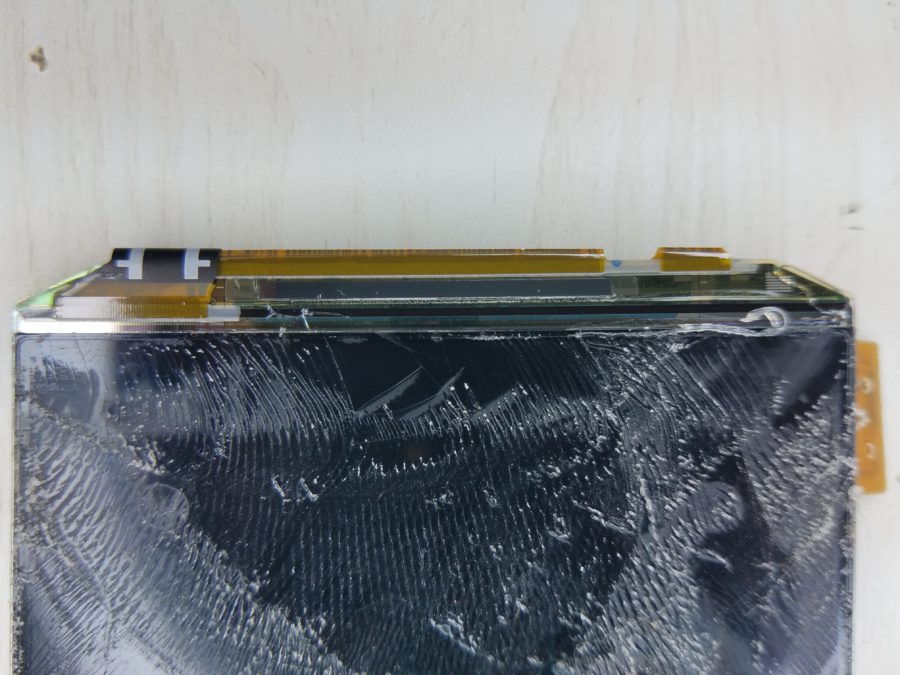
Everything is very tiny and fragile.
It became clear that the display cable is actually divided into two parts, the smaller of which is located just behind the place where the front camera is located on the phone. What else I drew attention to is that the train around the cutout has a greater density and greater rigidity, which means that it tries to straighten with more force, thereby exerting a load on the contacts.
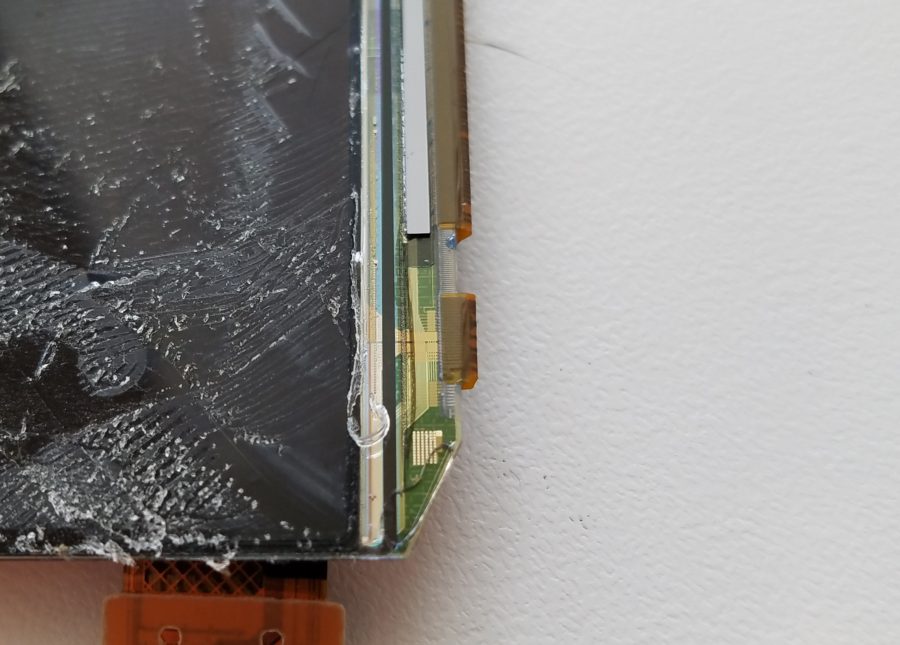
Now let's take a closer look at these very contacts.
With such dimensions, there is no question of soldering – everything is on conductive glue.
Here is a comparison of contact sizes with a regular toothpick.
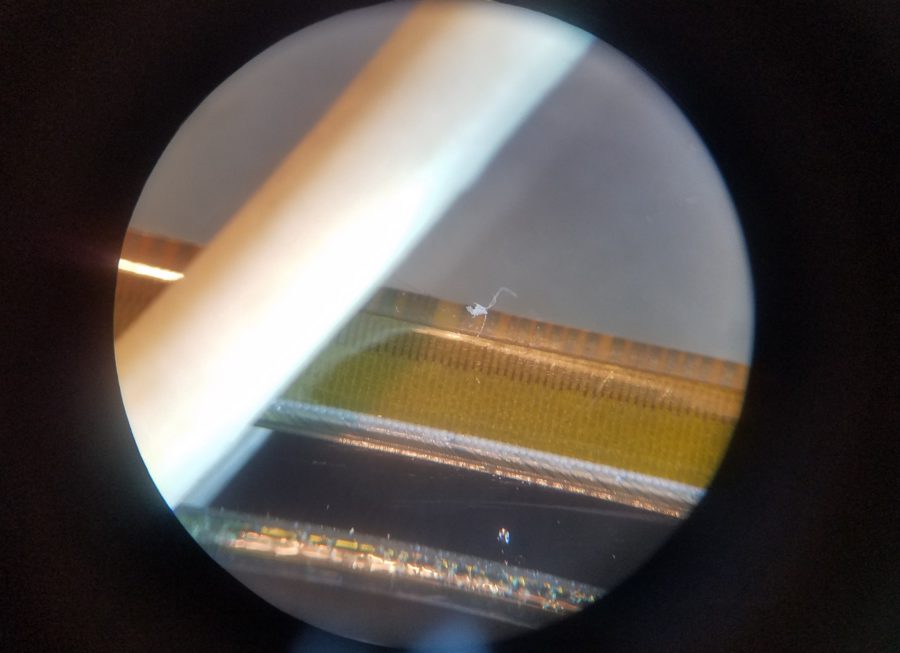
Here is this very train from the back. Everything seems reliable and solid.
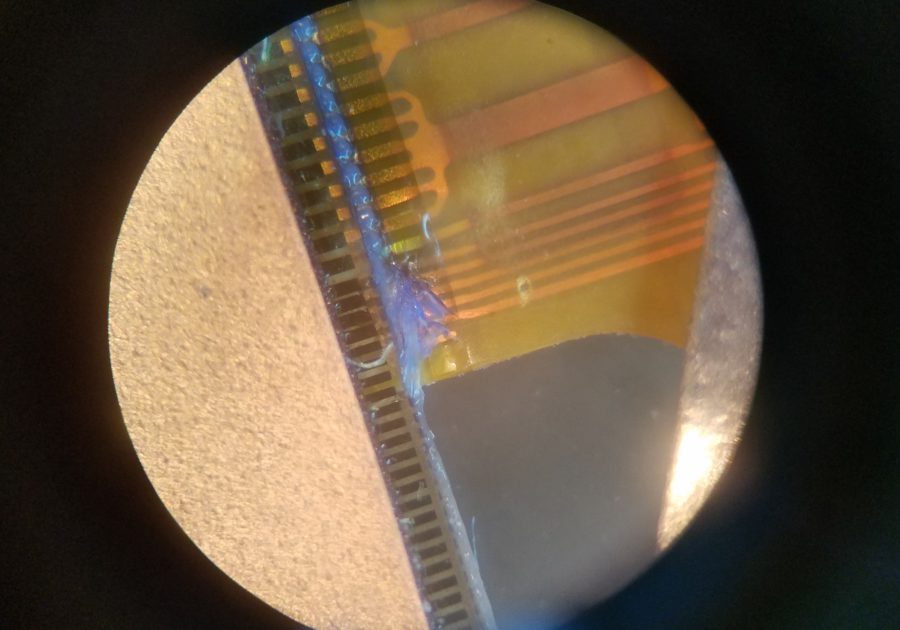
And now we look at the very edge where the strip usually appears.

The loop contacts are simply glued to the matrix contacts, and the free edge is not processed or protected in any way.
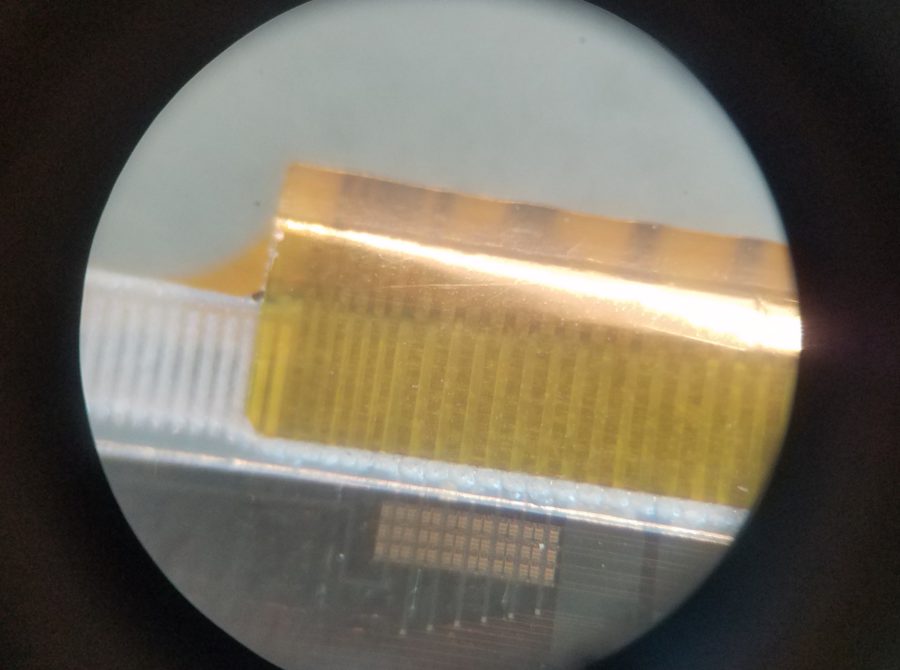
At the same time, the contacts on the matrix itself are something similar to a very thin foil or metallized paint and are very easily damaged, practically without effort (held with a needle with almost no pressure).
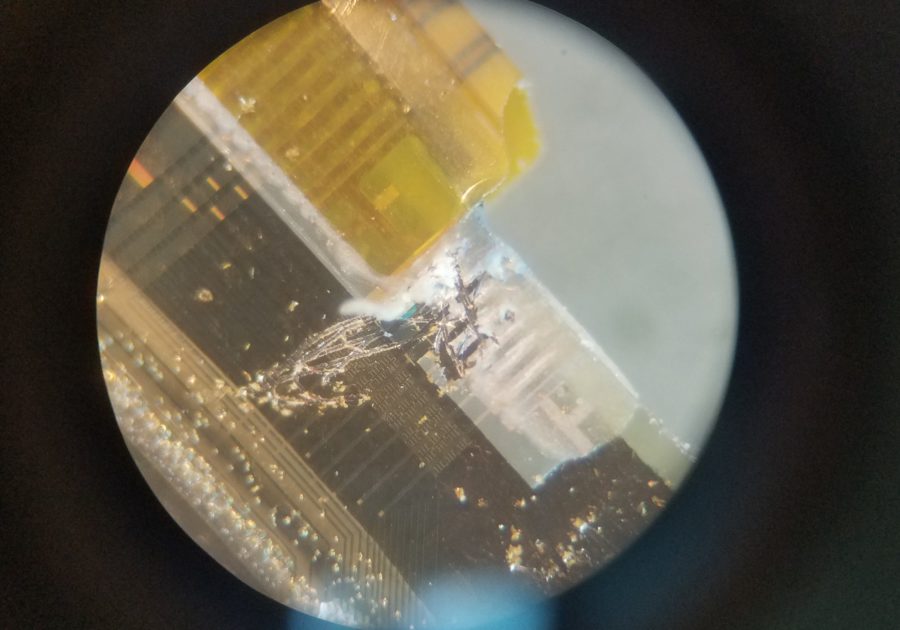
Again, everything is very fragile and delicate.
Now let's try to pry on the loop where the strip usually appears. He separated himself from contacts surprisingly easily.
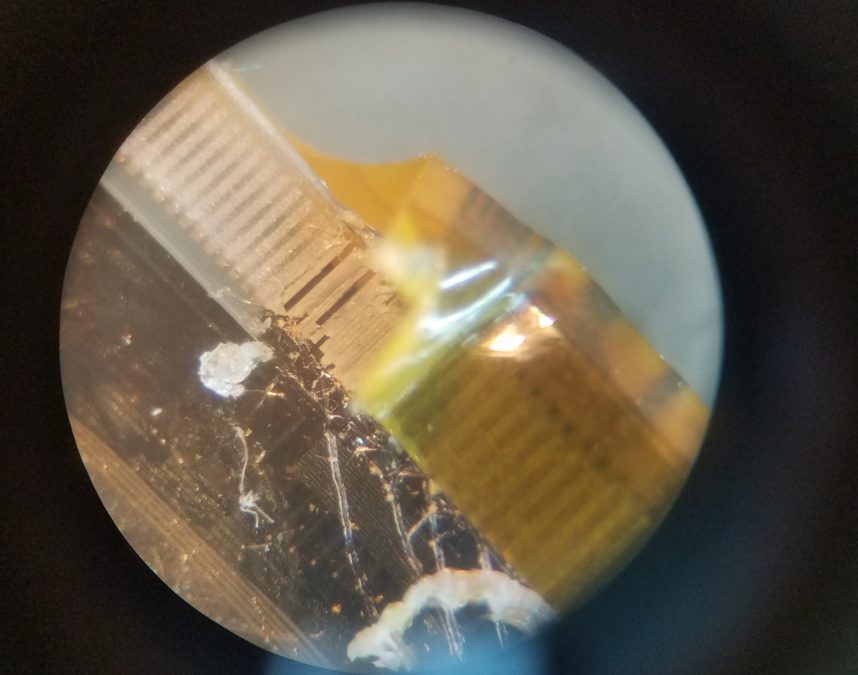
By the way, the module itself, before being glued, was a single whole, with an almost monolithic structure along the entire perimeter, with the exception of the area of these very loop contacts. A cavity was left there, inside of which this entire contact block was located. It should also be remembered that in problematic 'sevens' the matrix itself is soft, which means, on the one hand, the elasticity of the joint increases, which has a positive effect on durability and reliability, but, on the other hand, the rigidity of the structure decreases, and hence the strength of the joints.
The hypothesis that the problem is in the design itself has the right to exist. It remains to verify this empirically, having got our hands on a 'striped' display for subsequent experiments.
Instead of a conclusion
What if the hypothesis is confirmed and it turns out that this is exactly the case?
What to do with the red stripe? At the moment, there are special machines that allow you to re-glue such loops. But this machine is a very expensive pleasure, and it will pay for itself only with very large batches of such repairs. Whether it is worth the candle is hard to say. But it seems to me that no. Moreover, even the presence of such a machine does not guarantee a successful repair at all, since in order to re-glue the loop, the module must be removed from the frame, then separated from the glass and only then try to restore the loop. Each of these operations not only is not cheap and belongs to the category of not the most simple ones, but also carries certain risks of an unsuccessful outcome.
It's much easier to just buy a new display. Moreover, if you look well, then you will lose quite a bit in price regarding repairs. Thus, the feasibility of such a repair turns out to be a very big question, and the purchase of a machine for gluing loops, even for a service center, is a kind of gamble, where the main question will be whether it will pay for itself or not.
